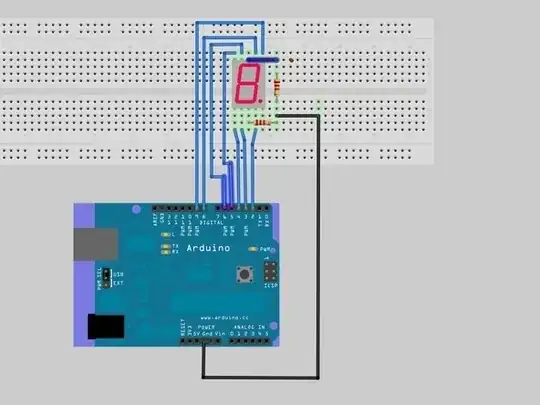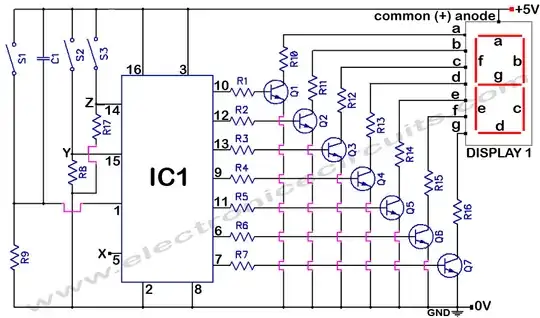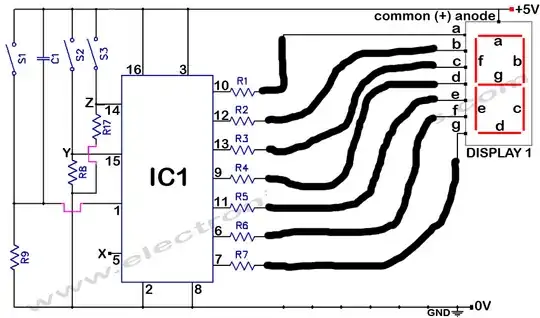I accidently bought a "Common Anode" 7-segment display instead of a "Common Cathode".
I understand that the polarity of the leds within the display is 'reversed'. So instead of putting the common pin on GND I have to put it to 5v (with current limiting resistor)
My questions on this are:
- Can I still use only one current limiting resistor on the common pin? Instead of a resistor on every segment pin.
- Can I use the pins from arduino to drive it (withouth pull-up/pull-down?) By making the signal
LOWthe current will flow from 5V common anode to the arduino and thus the segment wil light? - Can I still use a shift register to drive the segment led? (By inversing the outputs (in software))
Obviously I would like to have wiring more like this (but then I would ofcourse change the GND line to a 5V line.

The wiring below is the worst-case wiring I can think of.

^ So can I avoid this, when using a Common Anode 7-segment display or am I forced to buy a Common Cathode 7-segment display?
